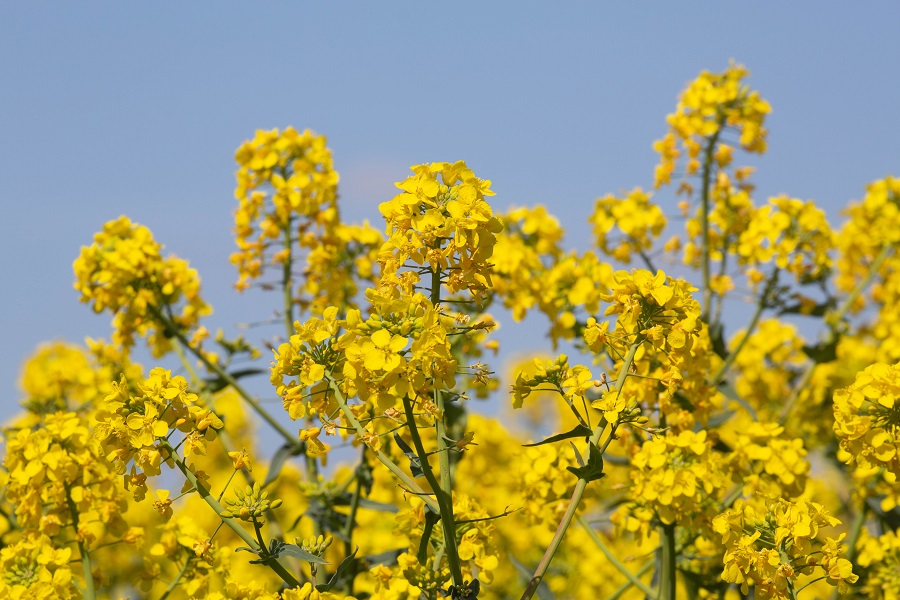As growers look to minimise risk at the key autumn establishment stage, some biostimulants are claimed to be helpful aids to get the crop up and away quickly and encourage early growth – something which is particularly important for crops like oilseed rape.
And among the options on the market is Maxicrop Triple from Valagro. Formulated from seaweed extracts, Maxicrop is suitable for use on a wide range of crops. In OSR, it’s claimed to be able to aid crop establishment, with lab research to date highlighting that the biostimulant increases leaf chlorophyll, and enhances root and shoot growth, explains Valagro’s Mike Garner. “This research has also shown that Maxicrop extracts can help alleviate abiotic stress, as well as stimulating the plant’s natural resistance to stress factors.”
These lab research results hold up under field conditions, adds Mike, with a depth of historic trials supporting the company’s claim that Maxicrop helps maintain leaf function and reduces abiotic stress. “This means that more energy is available for growth, which could in turn help to enhance flower initiation – resulting in higher yields,” he adds. “Our previous trials have shown yield responses from applications made from the four-leaf stage to 5-6 leaves, giving growers flexibility of timing and allowing them to apply Maxicrop Triple in combination with crop protection products.”
Delving deeper into these in-field trials, yield responses of 0.22t/ha were seen from an autumn application of Maxicrop at the 5-6 true leaf stage, compared with standard management, notes Mike.
However, given the advances in both the knowledge of how biostimulants work and the awareness of them, Mike says the company wanted to get some new data to once again prove the capabilities of Maxicrop.
As such, more trial work was commissioned by Valagro in the autumn of 2021. Trials were carried out by independent contractors, Cropsure, at a site in Sherburn, North Yorkshire and two application rates were examined: 2 l/ha and 3 l/ha – both applied at the four-leaf stage.
The results
Early crop vigour was improved in the Maxicrop treated plots, compared with the untreated control, says Mike. “While this was not statistically significant, treated plots showed improvements ranging from +6% to +11% up to December 2021. By spring 2022, differences in vigour were less noticeable, typical of a crop growing rapidly with the onset of spring.”
Root growth was also measured and, while also not statistically significant, by December improvements of between 6% and 9% were seen in root length, and up to 12% improvement in root weight, when compared with the untreated plot, he adds.
Above ground, increases in shoot length and weight were small and not statistically significant by December.
In terms of yield, both rates of Maxicrop Triple gave positive yield responses, ranging from +160kg/ha to +210kg/ha, compared to the control. “Maxicrop Triple at 2 l/ha was statistically significant at the 95% confidence interval. Both yield responses were statistically significant at the 90% confidence” explains Mike.
“In summary, at the 3 l/ha rate, Maxicrop Triple seemed to give a greater vigour and growth response than the 2 l/ha rate. However, Maxicrop Triple at 2l/ha gave the highest yield response.”
Thinking ahead to the new season OSR crop, with many growers likely to have drilled later than usual by reason of waiting for essential rainfall, the added vigour and growth Maxicrop can bring could be particularly useful. “If growers have held back or are a bit later to drill this year, getting crops out of the ground as quickly as possible is going to be key. Therefore, leaning on the power of biostimulants could be even more pertinent this autumn,” he concludes.
2021 oilseed rape trial – yield data
| Treatment number | Treatment name | Yield (t/ha) | % over untreated | ||
| 1 | Untreated | 4.59 | b | 100.00 | b |
| 2 | Maxicrop Triple 2 l/ha | 4.80 | a | 104.74 | a |
| 3 | Maxicrop triple 3 l/ha | 4.75 | ab | 103.64 | ab |
| LSD | 0.21 | 4.71 | |||
| CV P=0.05 | 2.59 | 2.65 |
Source: Valagro




